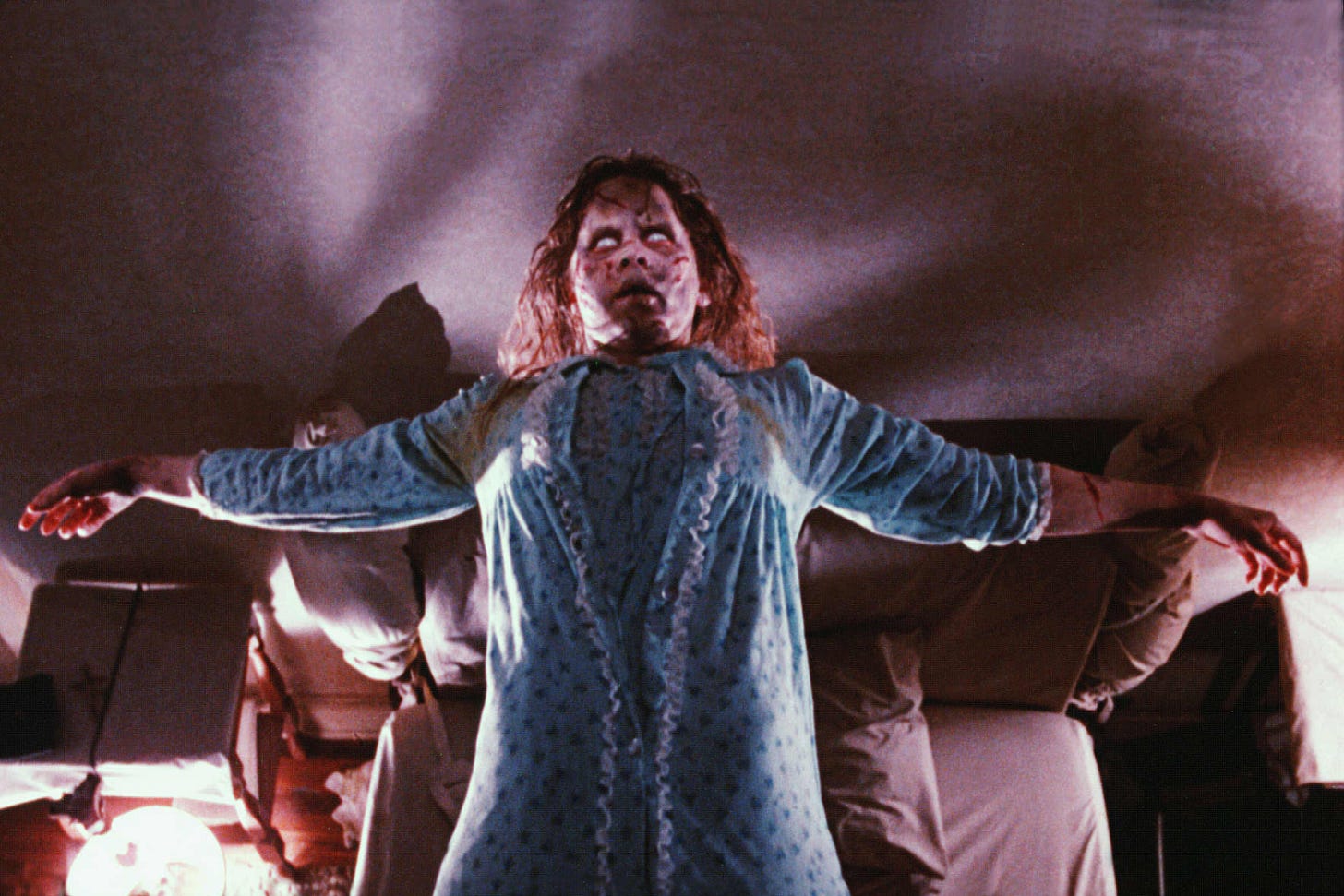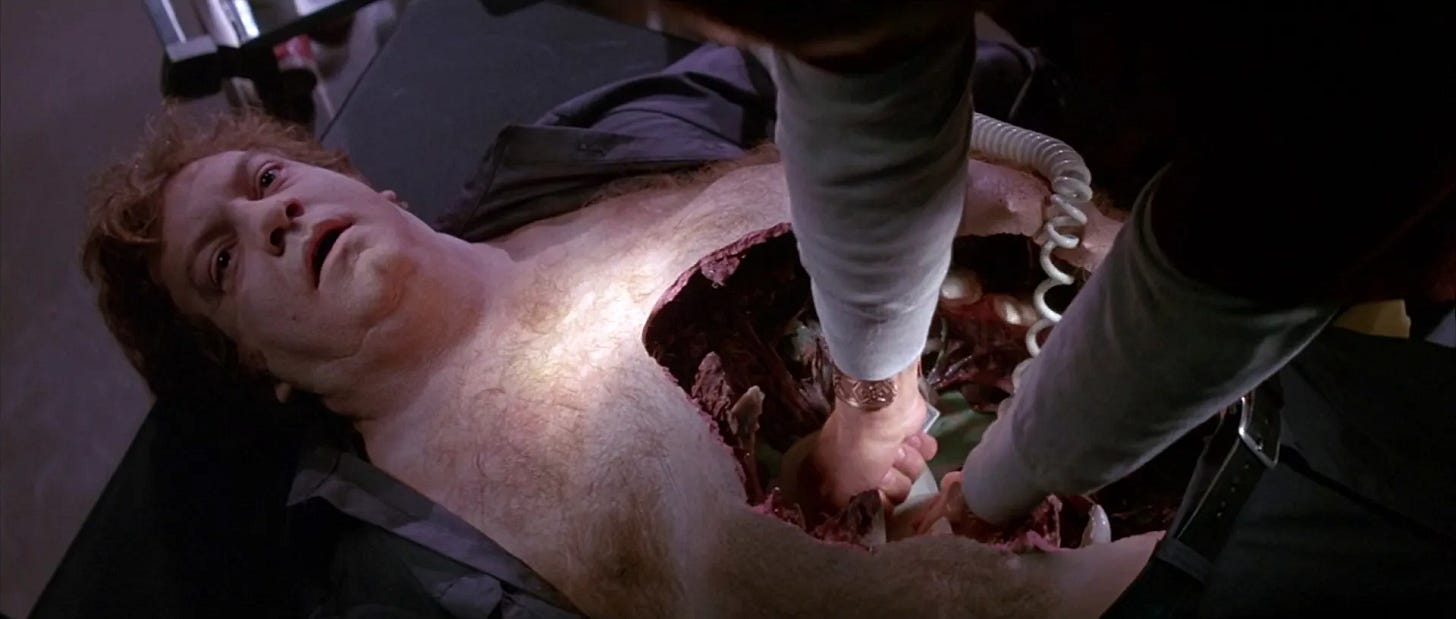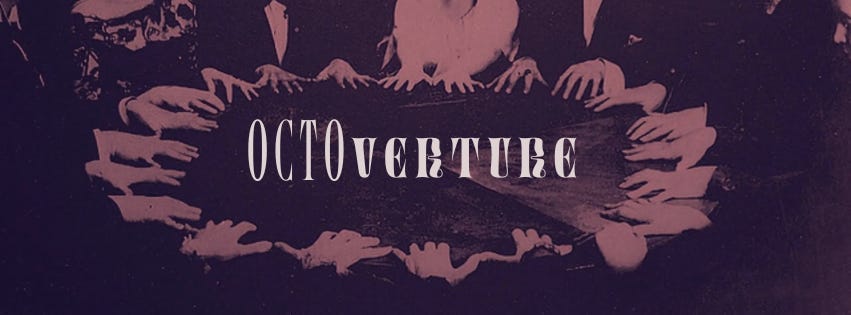The Abject: Movement in Horror
A conversation with Eventual Dance Company's Caitlin Canty.
**Content Warning: Stills from various horror movies**
For many of us horror buffs, horror is a nostalgic thing that we discovered as children, perhaps in the library reading Scary Stories to Tell in the Dark, or watching Goosebumps or Scooby Doo. Horror buffs usually all have that one movie that they watched at too young an age, that manifested their deepest fears even into adulthood. I’ve heard this story about The Exorcist specifically many, many times.
But for Caitlin Canty from the Eventual Dance Company, horror isn’t a nostalgic enjoyment. It’s a contemporary fascination and study sparked by happenstance and emotional recognition.
“I started watching a lot of horror movies around 2017. I was feeling horrified myself, and I was wondering how other artists were also handling this phenomenon.”
As a dancer, Caitlin was shocked to discover that so many of the action sequences that forwarded the narrative in horror movies were driven by curated and precise movement of the human body. “The movement was just as important as the dialogue” she tells me.
“I wanted to explore this more, so last year I did a small-scale survey where I asked people ‘What was the scariest movie you have ever seen, and in that movie what was the scariest scene?’ Out of the 40 people I asked, only one person gave me a scene that was dialogue-based. Everybody else told me about a scene that was movement-based, where there was no dialogue happening.”
What’s the scariest scene in a movie you’ve ever seen?
Caitlin’s next logical question after receiving these results was “Okay… well, what makes movement scary?”
It’s a question that doesn’t have a concrete answer, like asking what makes your favorite food so tasty? An infinite combination of taste-bud responses and culinary opinions only secures us in our understanding that food has the capability of being tasty, just like movement has the capability of being scary.
This year, Caitlin invited me and another talented composer and close friend, Anthony Brocatto to collaborate on a score for her Masters in choreography thesis at Smith College in Northampton, MA. That’s right, in addition to writing this Substack I also dabble in writing music!
In her original proposal for the work titled Unafraid Caitlin specifically aims to explore the fear capability of movement in the female body utilizing two feminist film theories on horror: Dr. Julia Kristeva’s theory of the abject and the theory of the monstrous feminine developed by Dr. Barbara Creed.
To begin with abjection, we must first define what that is. In sociological theory, abjection refers to being cast off and separated from norms and rules, especially on the scale of society and morality. But to Kristeva and the feminist school, the abject means something more specific.
”The abject exists accordingly somewhere between the concept of an object and the concept of the subject, representing taboo elements of the self barely separated off in a liminal space.”
The human reaction (horror) to a threatened breakdown in meaning caused by the loss of the distinction between subject and object or between self and other: loss of control over bodily functions, extreme hunger, blood seeping from a wound, projectile vomiting, a foreign object infiltrating or infecting the body. These are things that are a part of us biologically but transgress the boundaries of social acceptance. Are we ourselves existing in a civil society with dignity and self-determination, or are we roaming bags of flesh with little to no control over the bloody, filthy mess inside of us?
For this reason, Caitlin has decided to focus a lot of her choreography on puppetry. The idea that women are often puppets of the male gaze in horror movies (sit tight for an upcoming Octoverture collaboration with Director, Kristen Semedo for more on this) but also that humans are puppets to their own biology: a sentiment that feels all too horrifying for me, a recent cancer survivor.
I for one, prided myself on being a civil member of society. Intellectually guided by reason and politeness. But then, I had someone, a stranger, squishing my breasts between two pieces of glass on a three month basis. I had radiation tattoos unknowingly etched into my sternum. I had IVs snaking through my veins changing the content of my blood to poison. I had weekly in-depth conversations with strangers on the frequency and quality of my bowel movements. This onslaught of an invasion of my privacy and the incursions on my body as a contained and controllable entity scared me. Horrified me. And I didn’t want any of it, but I asked for all of it.
For as long as I can remember, my philosophy of self was that I was my brain, and wasn’t my body. So I prioritized expanding my brain, and reluctantly appeased the incessant demands of my body: hunger, thirst, exhaustion, ad-infinitum… Now more than ever, I feel like I’m not anyone at all.
I’m an amorphous collection of hormones and synapses that will constantly transgress the borders of properness but try desperately to hide it, distract from it, deny it. I am not me, but an other inhabiting me: the abject.
If I’m to give any sort of positive affirmations on this, it’s that the truth is likely somewhere in the middle. You are your brain, and you are your body. Your control over either always has been and always will be waxing and waning throughout your life.
I hope that over the course of our collaboration I’ll have the opportunity to flesh out this feeling more, both sonically, but also on this Substack. There is something deep in Caitlin’s project that speaks to me creatively and emotionally, and I do hope to share the final project when it is complete sometime early next year.
For now, keep an eye on Caitlin’s upcoming projects on the Eventual Dance Company website
I hope you enjoyed the second week of OCTOVERTURE. Each week of October I’ll post a new article collaborating with brilliant creators in the occult and horror space.
Make sure to subscribe so you don’t miss an update! Next week we’ll be exploring body horror and transformation with artist, Dorian Keeffe.









